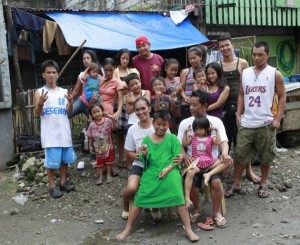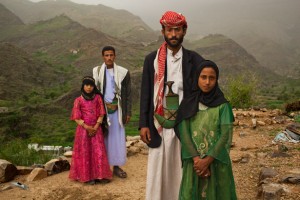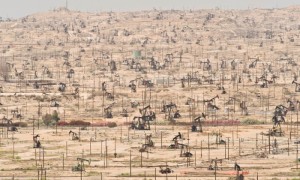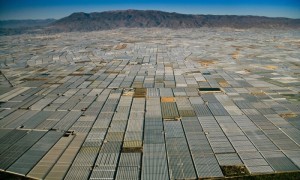Investing in women to save the world

Most contemporary estimates for the carrying capacity of the Earth under existing conditions are between 4 billion and 16 billion. In 2013 the human population was 7 billion.
In 2011, the UN’s population division suggested global population could peak at seven to eight billion by the middle of the century. Unfortunately, this was their most optimistic scenario. The mid-range scenario plateaus by end of the century at around 10 billion people.
The worst case scenario has the global population surging past 15 billion in 2100 with no discernible fall in the growth rate. Famine, poverty and climate change will become even more pressing concerns.
As a matter of urgency, we need to ensure that the global population plateaus.
An obvious place to start is with the education, empowerment, and reproductive rights of women.
Oppressive cultural practices such as the low status of women around the world, gender-based violence, rape, genital mutilation, forced prostitution, slavery, and child marriage significantly contribute to high fertility and population growth by robbing women of social power, self-determination and true choice in how many children to have, and when.
14 million girls are married before the age of 18 every year. In the developing world, poverty and traditional gender roles magnify this problem. 1 in 7 girls is married before age 15, and some child brides are married as young as 9 years old.
Each year, an estimated 16 million girls aged 15-19 give birth. Only 35% of unmarried girls and women in developing countries use a modern method of contraception — so most teen pregnancies are unplanned.
For every dollar spent on family planning, governments can save up to 6 dollars on health, housing, water and other public services. Family planning enables millions of girls to stay in school, saves lives and has the capacity to lift entire communities out of poverty.
31 million girls in the world don’t have the opportunity to pursue an education. Every day, they are taken out of school and forced to work or marry. One out of five girls in the developing world doesn’t even complete the sixth grade.
When girls have the opportunity to complete their education through secondary school, they are up to six times less likely to be married as children than girls with little or no education. Educated girls are also less likely to have unintended pregnancies as teenagers.

Philippine family, which is a result of the power of the Catholic Church to squash any use of birth control and family planning. Poverty, illiteracy and too many children create hopelessness, despair and no way out.
Religion needs to get out of the way. Contraception should be freely available and its use encouraged. Abortion should be legal and the stigma removed. Voluntary sterilisation should be available. Marriage should not be viewed as for the purpose of procreation and gay marriage should be recognised as a human right. Quality of life should be considered and assisted suicide should be an option.
Educated girls and women are healthier, have the skills to make choices over their own future and can lift themselves, their communities and their countries out of poverty. Even one more year in school makes a difference.
Poverty is also a factor in people having large families due to previous high infant mortality rates and the need for more hands to help work. Wealth eventually stops procreation in its tracks, a fact demonstrated by countries as diverse as Italy and Japan.
Microfinance initiatives have been particularly successful in providing economic stability through income generation rather than subsidies. It provides basic financial services, such as credit and deposit-taking, on a very small scale, to historically marginalized populations that do not meet the criteria to do business with conventional banking institutions.
Microfinance is a long term investment in human potential that has the power to generate long term economic returns while simultaneously improving grass roots political and social involvement. While third-party institutional aid programs that try to dictate development in emerging nations from the top down have historically failed, microfinance has the promise of promoting in-country development from the bottom up. The key is focusing on improving the capacity of motivated local populations – the very people who are most vested in promoting long term, lasting economic improvements in their families, communities and countries.
According to the UN’s Capital Development Fund: “Comprehensive impact studies have demonstrated that:
- Microfinance helps very poor households meet basic needs and protect against risks.
- The use of financial services by low-income households is associated with improvements in household economic welfare and enterprise stability or growth
- By supporting women’s economic participation, microfinance helps to empower women, thus promoting gender-equity and improving household well-being.”
UN statistics reflect that women represent the overwhelming majority of the world’s poor. Women have a higher unemployment rate than men and receive lower wages when employed. Typically, they are excluded from access to financial service. They are socially disenfranchised, geographically isolated and vastly undereducated compared to men. All of these factors have contributed to the feminization of poverty.
Yet, women emerged as more reliable microfinance clients than men. They were more likely to repay their loans in a timely manner and less likely to default. In one comparison of gender specific lending conducted by the Sinapi Aba Trust (SAT), a microfinance organization in Ghana, SAT found that the arrears rate in their all-male lending facility was 250% that of the all-female lending facility.
Studies show that women reinvest up to 90% of their incomes back into their families, compared to just 30-40% by men. Mothers provide better nutrition and health care and spend more on their children. Investing in women and girls creates long-term social and economic benefits for all individuals, their communities, and the world as a whole.
Evidence from microfinance organizations such as the Women’s Entrepreneurship Development Trust Fund, the UN’s Children’s Defense Fund and UNIFEM found that women’s economic empowerment raises the living standard of the entire household because women are less likely to spend income in a non-productive, short term manner. Women’s priorities for spending income are: children, medical services, nutrition, school fees and household needs. Their primary interest is the well-being of their families. Lending to women produces a positive ripple effect of improved health, education and welfare for all household members.
An excellent credit risk from the lender’s standpoint, women have demonstrated attributes that makes them more attractive as customers. On the whole, they are: co-operative and willingly attend weekly meetings; averse to taking undue business risks; cautious about extending credit to business customers; and, committed to the mutual guarantee of loans. Lenders have found that a woman will have a very positive attitude about validating the trust which a lender shows to her by making the loan and providing her the opportunity to engage in business ventures previously reserved to men.
In addition to improving the prospects of the household in general, access to microcredit empowers women. Along with economic rewards, women who are able to operate successful micro businesses gain self-confidence, independence and a sense of pride in their accomplishments. They enjoy increased respect in the community.
Operating their business requires the women to become skilled in dealing with suppliers, marketers and customers. Learning to negotiate business hurdles improves their decision-making ability. As they become more confident, they are likely to become more involved in their communities and local institutions.
Gradually, these skills can migrate to social and political circles so that women become more adept at advocating for themselves and their families. Learning the process of accessing, or advocating for, much needed local services can accelerate poverty reduction on a multitude of fronts. Microfinance is truly an investment that improves women’s social capital and promotes gender equality through economic success.
Rather than slashing foreign aid, we should be investing in lifting people out of poverty which is best achieved by investing in the education and empowerment of women. By this means we have a chance of the population plateauing at about 10 billion.
That is a lot of mouths to feed but it is doable according to sustainability expert Bruce Edgerton.
“Grow microalgae in the dry arid regions of the world where there is either sea water or non-potable water available for aquaculture ponds. Solar dry the biomass for transport to the peri-urban fringe. Formulate the microalgae with agricultural bio-products, vitamins and amino acids as required. Grow pigs, chickens and fish.
Anaerobically digest the manures on site and fertigate the effluent into glass houses. Hey presto—10 billion people fed generously, with a system that is highly adaptable to future changes in the climate.”
The consequences of not addressing overpopulation, resource depletion and pollution have been dramatically highlighted in a wonderful book produced by Global Population Speak Out called Overdevelopment, Overpopulation, Overshoot (OVER). It contains powerful and evocative images showing the ecological and social tragedies of humanity’s ballooning numbers and consumption. It can be viewed free online here and a short video of the campaign can be viewed here.














